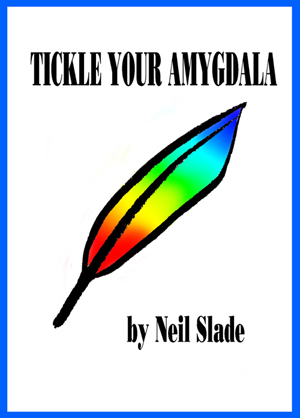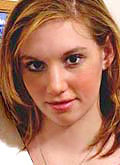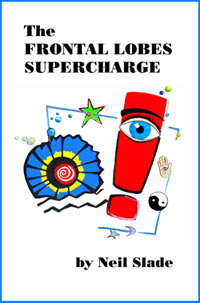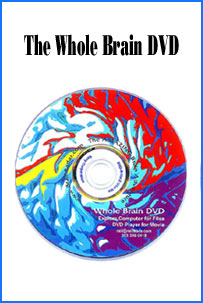AMYGDALA TICKLING
FUN-DA-MENTALS
* * *
Robert Schneider
Writer
RS: "…But anyway, one day I was driving along, thoroughly
depressed, and I did a little amygdala click and became
completely blissed out.
NS: (laughs) "You weren’t taking any drugs, correct?”
RS: "No. No drugs whatsoever, but it was as if I had taken a
very strong one- it was that big a change. That feeling
persisted for a good six or eight months I guess. A
permanent high. Every time I clicked forward I’d get on a
big high. It was simply that flip, that simple little flip
of the amygdala. This is what is so extraordinary to me,
that it happened, and that there wasn’t anything subtle
about it. It was just a complete change of outlook.”
* * *
Imagine you have a feather inside your brain.
Use it to directly tickle your brain’s Pleasure Spot.
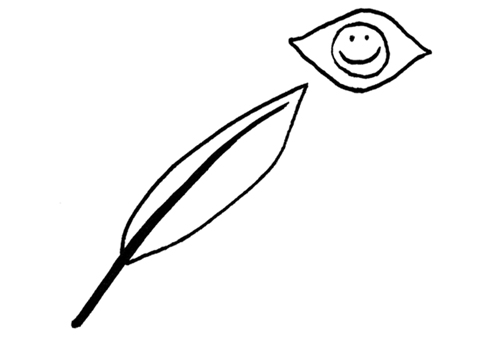
That’s one way to Tickle Your Amygdala.
Do you sometimes feel like a dog waiting for scraps, looking
up at the table while the rest of the family is scarfing
down a big Thanksgiving dinner?
So, how are you going to get a fat piece of that pumpkin
pie, eh?
Luck?
Fangs?
A giant super computer?
Well, it’s your lucky day! You already have the exact tool
to get what you really want and need-
You were born owning the most POWERFUL tool on Earth. It is
the most complex and remarkable device yet that anyone has
ever discovered. This is your very own-
HUMAN BRAIN
Save Money! Wipe your chin and forget about that vastly
overpriced and environmentally unsound $5000 Super-Duper
Liquid Cooled 100-Core Deluxe portable combo computer-cell
phone-washing machine-can opener that you've been drooling
over.
You ALREADY have the most amazing and powerful doo-dad ever
created, and it is sitting right between your very own waxy
two ears.
Fact: Your brain is an Infinity Mind Motor and Calculator
with literally more possible connections than there are
grains of sand on all of the beaches on Earth, more
connections than there are stars in the sky on a clear dark
night, or for that matter, you have more connections in your
brain than the total number of elementary particles in the
universe- as calculated by Dr. Carl Sagan, Dr. Richard
Restak, and others.*
By comparison, any other machine is about as impressive as a
lonely squirrel chewing on a stale wet watermelon seed.
*Dr. Carl Sagan,
cosmologist, Cosmos (1980, 2002), The Dragons of
Eden (Pulitzer Prize, 1977)
*Dr. Richard
Restak, Neurologist, The Brain (1984), Mysteries
of The Mind (2000)
BASIC TERMS OF USE: TICKLING YOUR AMYGDALA
So, what is the key to using this incredible brain machine
that you have on your shoulders to figure out which way to
the jackpot?
It is this:
Inside your personal super mind motor is a Master Compass
that works like pure magic:
The Amygdala.

The amygdala is part of a brain circuit that quickly tells
you which way to go- when you need to know it.
It tells you via emotional feedback how to know exactly what
is bad for you and also what is good for you. This brain
circuit computes:
Pleasurable Emotions as Reward
and
Unpleasant Emotions as Deterrent

Here is a photograph of a real human brain outside its
container along with a couple of real amygdalae. I know this
looks kind of gross, but I want to make sure readers of this
book know that I am not a lunatic and just making all this
stuff up.
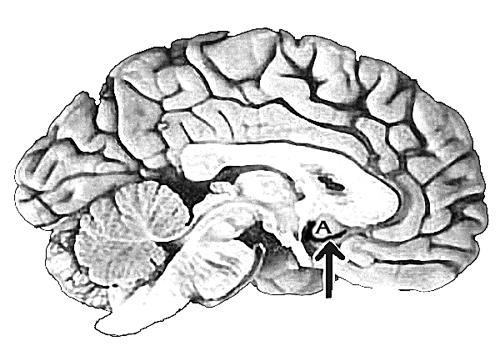
(Above: Cross section)
You have two amygdala in your brain, but they both pretty
much do the same thing. So we just say the singular
"amygdala” to refer to them both.
(Below: View from underneath)
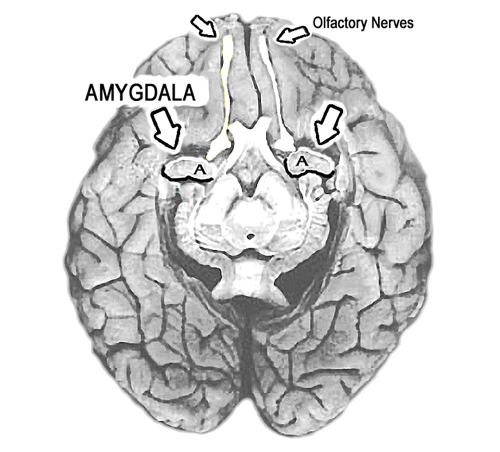
MORE AMYGDALA MAPS HERE
* * *
Dr. Robert Neumann
Head Neurosurgeon, University of Colorado Medical
Center Hospital
"The concept that we each have
far-reaching untapped potential is a very tempting concept,
because the next question it then leads one to is then, ‘How
do I get to it?’”
* * *
Although the amygdala responds to external cues and external
things like a nice kiss or the promise of a new toy
unwrapped, you can also self-stimulate your own amygdala
directly- and powerfully- by using your own internal
thoughts and behaviors. This is called
TICKLING YOUR AMYGDALA

Tickling your amygdala means to observe and directly
stimulate your brain's master Reward-Pleasure circuit.
You do it by using your own brain and thought processes.
Imagine that.
What could possibly be better than being able to directly
tickle your own brain’s pleasure circuits and your Feel Good
spot?!
Tickling the amygdala is easier than scratching an itch,
licking your favorite flavor ice cream cone, or eating
chocolate cream pie.
It is like a dessert that never runs out- even when you
don’t have any money in your pocket.
You can tickle your amygdala any time and at any place.
Unlike scratching your butt, you don’t have to worry about
being embarrassed that you are doing it in front of somebody
you are trying to impress.
As it turns out, tickling your amygdala also turns on your
brain’s built-in genius problem solving, creativity, and
intelligence circuits. That’s right- in the middle of your
own cranium you have the very same internal circuitry that
little Albert Einstein was born with, and which he later
tickled himself to write his world famous equations.
Tickling your amygdala works better than anything else for
you and for everyone around you.
Tickling your amygdala is as easy as flipping a light switch
on, it costs nothing, and you can’t be put in jail for doing
it.
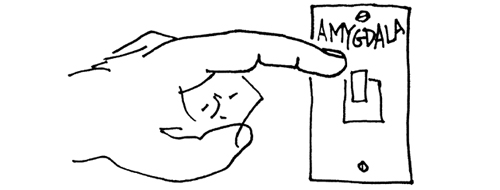
This all sounds great, but, it’s just pretend, right?
Nope.
Between 1995 and 2009, Dr. Sarah Lazar, Dr. Herbert Benson
and other researchers at the Harvard Medical School
demonstrated conclusively in a number of research projects
that one could instantly and positively stimulate one’s
amygdala with sheer thought. The results were demonstrated
and recorded using functional MRI brain scanning machines
and have been repeated many times by others in similar
laboratory experiments.
People all over the world are now reporting their ability to
tickle their amygdala. Any kind of people; Smart people,
silly people, professionals, unemployed workers,
skateboarders, scientists, gardeners, you name it.
People just like you and your mother.
* * *
You have to stimulate that neuro-pathway
between the amygdala and the pre-frontal cortex, so you can
think things through very quickly. And the best way to do
that is to tickle the amygdala forward.
* * *
* * *
Kyle Ridgeway
Physical Therapist, (Neurophysiology)
"Just the thought of that feather
really engages your imagination, it’s instant. It is so
simple, but it’s instantly effective.”
* * *
But there is not just one way to tickle your amygdala.
You will discover how to tickle your amygdala in your very
own way.
When you do- you’ll know it:
You will smile- and even at times, fall over laughing,
because it’s so simple to do.
BRAIN RADAR
When you tickle your amygdala you automatically turn on
Brain Radar.
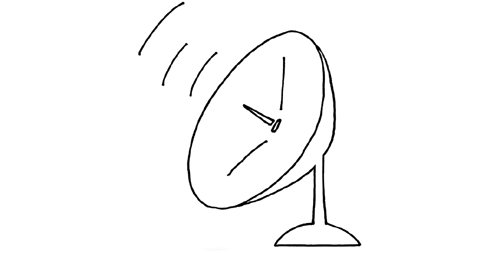
Brain Radar is the application of "Whole Brain Power", a
powerful combination of logic and reason combined with
extraordinary intuitive perception.
Brain Radar provides you with seemingly "magical”- but
completely real means for arriving at
The Right Place at The Right Time with The Right Solution
* * *
Elizabeth Slowley
Massage Therapist
"What's interesting is how fast it
happened, and how powerful our thoughts are. Activating our
higher brain power activates our whole body vibration.”
* * *
Your built-in Brain Radar guidance system delivers you right
on target.

Brain Radar is like always having a magic wand in your
pocket- except that it is not make-believe. It comes
from a real understanding of how your brain works and how to
access the infinite potential in yourself.
* * *
Paul Epstein
Independent Record Store Owner
"I’m the master of my own destiny- as
long as I’m not afraid to do things differently.”
* * *
POPPING YOUR FRONTAL LOBES
Regular amygdala tickling will eventually allow you to: "Pop
Your Frontal Lobes”.
We are all familiar with popping chewing gum or popping your
eardrums on a plane. Believe it or not- the brain is
actually capable of more than that.
Popping Your Frontal Lobes is like hitting the Brain
Jackpot.
It is the astonishing sudden peak "Eureka!” moment of great
significance, discovery, solution, understanding, and
overwhelmingly positive emotion that far eclipses normal
experience. You are at last licking that big ice cream cone
in the sky.
If you think about it for just a few seconds, you’ll
remember something like this has happened to you, or
something quite close to it. Maybe it was just a little
thing, or maybe it was a big thing.
Just think for a second and remember a time when suddenly
all of the pieces fit together, when you finally got it,
what you had been looking for, for all that time. You can
Pop! your frontal lobes and make it happen again. And again,
and again.
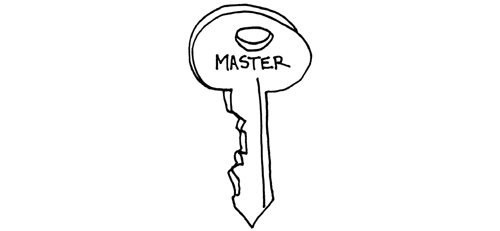
* * *
Shari Harter
S.F., CA
"I was in the bathtub one night, and I was in a relaxed
self-contained place and I was doing my visualization there.
That’s how I would tickle my amygdala. I could stay focused
and do that for quite a while, and then I had an inner Pop!
and I recognized it.”
* * *
You no longer have to tolerate every moment as if you are
bored out of your skull, as if you are doomed to clean out
your cat box for eternity.
Instead, you can choose to tickle your amygdala, turn on
Brain Radar, and Pop Your Frontal Lobes in a big way
and get that big piece of pie that you’ve been drooling over
and that has been out of reach for so long.
Science has now demonstrated that the biggest and smartest
part of your brain is also the most fun and pleasurable to
use. It’s right there waiting to be tickled by you,
twenty-five hours every day.
It’s as easy as… well… pie.

Anything else is just an accident.
Chapter 6
THE AMYGDALA
You are a complex
living organism. Unlike an amoeba that only lives about as
long as a couple of old episodes of "I Love Lucy” or the
time it takes you to drive to the dry cleaners and back, you
stick around for a relatively longer period of time, plenty
of time to get into lots of trouble.
The complexity of
you started long before the advent of even crummy looking
black and white TV programs, something like sixty-five
million years ago. This was when Mama Nature started
equipping Earth mammals with a brain that could flip a whole
lot more kinds of tricks than what a peanut-sized dinosaur’s
brain could accomplish, such as merely biting the head off
of the smaller dinosaur who lived next door.
We know what
happened to the dinosaurs, and it wasn’t so good.
The mammals, on
the other hand, thrived and survived to this day, to make
pests of themselves, not only by invading the area behind
your kitchen stove but also by running for government jobs
every couple of years.
One of the
reasons for the long success of mammals is a little bit
inside the mammal brain that allows furry creatures to
experience emotions. Obviously, this emotional brain
area is not always functional, as observed in those upright
humanoid brains that would cut off funding for badly needed
social service programs without blinking an eyelash. But
otherwise, this part of the brain is a working little gold
nugget of neurophysiology that provides a primary function
in the service of species survival.
This emotional
hub of this furry mammal brain is called:
THE AMYGDALA
Your dog has an
amygdala, a ferret has one, a mouse has one, and so does an
anteater. For that matter, you do too.
The amygdala gets
its name, meaning "nut” in Greek, because it looks something
like an almond or a walnut, not because it looks like Jerry
Lewis.
You’ve got two of
them, one in each side of your head, one for each hemisphere
of your brain.
The amygdala is a
hub for forming, retrieving, and processing emotions.
The amygdala is
connected to major other parts of the brain. This includes
the core reactive parts of the brain which regulates basic
body functions as well as the most advanced parts of the
brain responsible for complex thought production, abstract
creative thought, and social behaviors.
The interaction
of all of these areas of the brain results in your emotional
response to sights, sounds, sensations, as well as more
complex ideas and cues.
EMOTIONAL
SHORTCUTS
As a general
rule, you are attracted to things that are good for your
survival by positive emotions, and you are repelled from
things that are bad for your survival by negative emotions.
By no
coincidence, the amygdala is actually directly connected to
your olfactory nerves, and your sense of smell. You can
easily observe how odors can trigger emotions simply by
taking a whiff of something you enjoy, and comparing how you
feel when you smell something you do not enjoy.
That’s your
amygdala- telling you to run towards fresh buttered popcorn
wafting out of the bowl sitting on your kitchen counter and
telling you to run away from the moldy yogurt that is
crawling out of your refrigerator next to it.
In the same way
that a mammal can smell danger or food far in advance of
being face to face with it, your amygdala serves as an
"early warning system” so that you can respond long before
you understand something.
Your amygdala in
this sense helps you to "sniff out” threats and rewards,
even when you haven’t yet figured out why you might like or
loathe something.
This emotional
evaluation that you make of things that cross your path
happens instantly through your amygdala, faster than you can
rationally think about such things. That’s why you still
have an amygdala and why it’s never been discarded into the
evolutionary garbage heap.
But your amygdala
is connected to all of your senses. So even though you can’t
smell it, when you see and hear an asteroid flaming down on
you through the clouds, you don’t think much about it- Your
amygdala instantly tells you, "This is not good. Run like
heck!”
DETAILS:
TICKLE YOUR AMYGDALA
To "Tickle Your
Amygdala” means to consciously and directly stimulate the
reward pathways and to activate the pleasure circuits of the
human brain, not from random or external causes, but by
personal will. You tickle your own amygdala, rather than
have it stimulated by accident by whatever you happen to run
across.
This is done by
consciously invoking the brain’s basic frontal lobes
processes of
Cooperation
Imagination
Creativity
Intuition
Logic
These C.I.C.I.L.
processes occur singly or in any combination determined by
the individual’s preferences and needs.
Your frontal
lobes create a positive force expressed by CICIL:
Cooperation, Imagination, Creativity, Intuition, Logic.
Cooperation: Constructive Social Interaction
Imagination: Abstract Thought, Ideation of Time
Creativity: Syntheses, New Combination of Disparate
Elements
Intuition: Non-verbal Perception,
Non-Linear Ideation
Logic: Linear Perception, Verbal Ideation
Apply one’s
frontal lobes skills completely, and you get the whole kit
and caboodle- no reality hangover later on.
"TICKLING
THE AMYGDALA”
A
SUSTAINABLE POSITIVE EMOTION is the absolute determining
marker for whether the amygdala is tickled or not.
In order to
insure long term positive emotion the organism MUST employ a
reliable system, and that means frontal lobes thinking.
By using your
frontal lobes, you can tickle your amygdala and keep on
truckin’.
Every
person that tickles their amygdala- by whatever method-
does it without exception by employing one or more
frontal lobes processes of C.I.C.I.L.
Cooperation – Imagination – Creativity –Intuition –
Logic
By definition,
tickling your amygdala indicates enhanced long-term
survival, indicated by sustainable positive emotion. The
pleasurable reward response is not reversed by a "reality
hangover” and negative rebound after-effects.
Amygdala tickling
produces effects superior to temporary and randomly
stimulated reward responses that do not involve sufficient
frontal lobes processes, and that are subject to negative
rebound.
Tickling your
amygdala results in superior problem solving abilities
beyond those accessed by random discovery, negative
reinforcement, or poor methods of learning.
The amygdala
tickling reward process positive emotional effect may be
learned and repeated to produce a positive habit which is
self-reinforcing. The results of amygdala tickling are
progressive and accumulative over time.
Josh Blue
Stand Up
Comedian
Josh Blue tickles
his audiences’ amygdala every time he goes on stage. He
became a household name in America as the winner of the hit
NBC television show Last Comic Standing, (2006). A member of
the U.S.
Paralympic Soccer Team, he competed in
Athens at the
Paralympic Games, the world’s second
largest sporting event.
He continues to
tour full time performing live shows on stage and on
television, and has several comedy CDs, a DVD, and an
upcoming book to his credit. His life and story illustrates
many frontal lobes amygdala tickling principles.
NS: "Where does
your humor come from? What is funny, and why?”
JB: "People have
such a skewed idea of what disability is and what they think
I should be capable of. The fact is, I’m usually smarter
than the person who is condescending towards me. That’s
funny to me. It’s the bait and switch- ‘Okay, you think I’m
that person, so I’ll just lead you down that path to let you
think I’m that person, and then I’ll switch it up at the end
at a crucial point.’” (laughs)
NS: "What about
your parents?”
JB: "My parents
home-schooled me. My mom is a librarian, my dad is a
language professor, a genius who speaks thirteen languages.
My dad told me, ‘You don’t need to know everything; you just
need to know where to look it up.’”
NS: "He married
the right woman- it was a match made in heaven.”
JB: "My family is
very smart, everybody in the family is a teacher, and
everybody speaks different languages fluently. All my
siblings went to a fancy private school, but because of my
handicap my parents had to send me to a public school. It
was an experiment, ‘Let’s send one to a public school and
see what happens.’ I’m not book smart like my siblings, but
I’m street smart and I can beat the hell out of them!”
(laughs)
NS: "Well, you
make your living out of language, just like everybody else
in your family.”
JB: "Yep. And I
speak three languages anyway, English, French, and Wolof,
the native language of Senegal. If we were speaking Wolof,
we would still be greeting each other for ten minutes,
‘How’s your dog? How’s your house? How’s your family? How ya’
doing? You okay?’ Just on and on. It’s a very playful
language.”
NS: "Was your
humor a mechanism for survival for being different?”
JB: "Humor is the
best defense- to make people laugh. If you’re going to make
fun of me, but I’ve already said something funnier than
anything you’ll ever say, you’ll look really dumb by
comparison.
Although I didn’t
really fit the norm in school, I could cross all the
cliques. I could sit at any lunch table I wanted to. I just
chose the all-black girl lunch table, ‘cause it was the most
fun. Besides that, if anyone picked on me, those girls could
just shred anybody, verbally or any way. (laughs)
After college I
went back to Senegal for a while and did some independent
study as a zookeeper, which was totally random, but life
changing. One time I got the zoo to lock me into a cage for
an entire day and put me on display.”
NS: (laughs)
"Okay, so what was that like, what happened?”
JB: "I had no
shirt on, just shorts. The thing was, if you take cerebral
palsy and take it out of context and put it in a cage,
people don’t know what the heck is going on. During the
afternoon, there would be like seventy people constantly
around my cage feeding me peanuts and fruit.
Also, I shared a
wall of bars with a four-hundred pound gorilla.”
NS: "What did the
gorilla think?”
JB: "Well I
established a relationship with him. I was one of three
people in the world who could pet him. He was a beast, but
cool. So I was on the other half of his enclosure. So during
the day’s siesta, everyone has left the zoo, and I decided
to stay in there and do the whole day, just like a real
animal.
So I’m half
asleep on the concrete floor, and nobody is around and all
of a sudden I hear this noise. The gorilla has got his hands
around the metal door and he’s bending it to get into my
half of the cage.
So I had to
really quickly start playing with him, running back and
forth to keep him distracted so he would stop trying to
break into my area, because there was nobody around to save
me.
The zookeepers
started calling me the ‘Boo Boo Monkey’ that day, and they
were telling people that they had captured me in the
mountains of the Congo. And I didn’t talk all day. But
people were talking about me in Wolof, and nobody thought I
could understand them- but it took everything to keep from
laughing.
One lady starting
talking to me in English and said, ‘You’re crazy!’ and then
I suddenly said back to her in Wolof, ‘You’re crazier than
me!’ which she didn’t understand but everybody else standing
around did, and everybody started laughing, and she didn’t
get it at all.
One time I got
malaria, and I had to go to the doctor to get a shot. So
while I’m talking to the doctor I tell him, ‘You ought to
bring your kids to the zoo sometime, because I work there.’
So of course, the day he decides to bring his kids to the
zoo is the day I’m in the cage next to the gorilla in my
shorts. He’s probably thinking, ‘Oh gosh, the shot didn’t
work.’
And he’s looking
at me and says through the bars, ‘Do you remember me?’ And
I’m just in there grunting like an ape going ‘Oo oo oo’, and
I made some ape sign language symbol with my hands for an
injection in the butt.
NS: (laughs) "How
old were you then?”
JB: "I was about
twenty. To be honest with you, at that point in my life I
went, ‘Okay, now I can die. If I die now, I can say that
I’ve done and accomplished something that probably nobody
else has ever done.’”
NS: "For you it
was that point where you said, ‘From this point, anything
else goes.”...........
(Josh's Complete Interview and 55 more in the book.)
****************************************************************************************************************************************************************************
REFERENCES
These are just a few of the many available references that
some readers may find useful in their own investigations
beyond the scope of this book.
For those who wish to look into brain function in detail
beyond the resources of the public library or the myriad of
anything-goes information on the World Wide Web, a
university or medical school library will generally offer
public guest access to scientific and medical references, as
well as to full medical and scientific journal collections.
Sarah J. Banks, Kamryn T. Eddy, Mike Angstadt, Pradeep J.
Nathan, K. Luan Phan, "Amygdala-frontal connectivity during
emotion regulation”, Sarah J. Banks, Social Cognitive and
Affective Neuroscience, Vol. 2, Is. 4, p. 303, (2007)
Mark G. Baxter, Elisabeth A. Murray,
"The Amygdala and Reward”, Nature Reviews Neuroscience, Vol.
3, Is. 7, p. 563-564, (2002)
Matt DeLisi, Zachary R. Umphress, Michael G. Vaughn "The
Criminology of the Amygdala”, Criminal Justice and
Behavior, Vol. 36: p. 1241, (2009)
Rupa Gupta, Timothy R. Koscik, Antoine Bechara, Daniel
Tranel, "The Amygdala and Decision-Making”,
Neuropsychologia, Vol. 49, p. 760-766, (2011)
Britta K. Hölzel, James Carmody, Karleyton C. Evans,
Elizabeth A. Hoge, Jeffery A. Dusek, Lucas Morgan, Roger K.
Pitman, and Sara W. Lazar. "Stress reduction correlates with
structural changes in the amygdala.” Social Cognitive and
Affective Neuroscience, (2009)
Sara W Lazar,
G, Gollub Bush, G.L. Fricchione, G. Khalsa G, Herbert
Benson, "Functional brain mapping of the relaxation response
and meditation”, NeuroReport, 11: 1581-1585, (2000).
Joseph LeDoux, "Primer: The Amygdala”, Current Biology, Vol.
17, Num. 20, p. 868-874, (2007)
Ekaterina Likhtik, Joe Guillaume Pelletier, Rony Paz, and
Denis Pare "Prefrontal Control of the Amygdala”, The
Journal of Neuroscience, 25 (32): p. 7429-7437, (2005)
Elisabeth A. Murray, "The Amygdala,
Reward and Emotion”, Trends in Cognitive Science,
Vol. 11, Num. 11, (2007)
James Olds, "Pleasure Centers in the
Brain, Scientific American, (1956)
James Olds, Peter Milner, P., Positive
Reinforcement Produced by Electrical Stimulation of Septal
Area and Other Regions of Rat Brain”, Journal of
Comparative and Physiological Psychology, Vol. 47: p.
419-427, (1954)
"The Pleasure Seekers”, New Scientist, October 11,
(2003)
Rients Ritskes, "MRI Scanning during Zen Meditation”,
Constructivism in the Human Sciences, Vol. 8, p. 85-89,
(2003)
H.B.M. Uylings, editor, "Cognition, Emotion and Autonomic
Responses: The Integrative Role of The Prefrontal Cortex and
Limbic Structures”, Progress In Brain Research, Vol.
126, (2000)
******************************************************************************************
INTERVIEW and WEB LINKS INDEX
(In alphabetical order)
Marilyn Auer
Publisher/Editor-in-Chief Bloomsbury Review,
bloomsburyreview.com
Jeff Bailey
Vegas Dealer, Ice Cream Master,
mydailyscoop.com
Dr. Lawrence Blair
Psycho-Anthropologist,
indonesianodyssey.co.uk
Josh Blue
Comedian,
joshblue.com,
Laurel Bouchier
Massage, Chinese Medical Herbalist, Acupuncturist,
blossom-healing-arts.com
Jim Casart
CPA
Dr. Cheryl Chessick, M.D.
Psychiatrist, Psychiatric Clinician
Paul Conly
Rock Musician, Composer, Electronic Music
Vic Cooper
Automotive Repair/Refinish Expert
Eric Daanger
Musician, Artist,
ericdaanger.com
Sean Danato
History and Psychology
Oriental Dance Artist,
suzannadelvecchio.com
Paul Epstein
Record Store Owner, Musicphile,
twistandshout.com
Erfie and Chloe
Canines,
erfieandchloe.com
Mark Foster
Percussionist,
Music Faculty Metro State College
Walter Gerash
Attorney
Ina Hambrick
Yoga School Instructor and Proprietor
Shari Harter
Enquiring Mind
Glenda Heath
Yoga and Aerobics Instructor, Massage Therapist
Sarah Jaeger
Ceramic Artist,
sarahjaeger.com
Terry Jones
Comedian, Film Director, Writer,
pythonline.com
Bernd Jost
Book Publishing Editor
Paul Kashman
Newspaper Owner and Chief Editor,
washingtonparkprofile.com
Ramon Kelley
Artist,
kelleyfamilyfineart.com
Shirley Kenneally
Recording Studio Owner
Dr. Stanley Kerstein, M.D.,
Physician
Julia Lu
Artist, History and Science, Attorney,
juliapainting.com
Jean Massey
Public School Guidance and Behavior Counselor
Mike McCartney
Public School Music Teacher, Musician, Composer
Michelle McCoskey
Computer Software Technology
Tom Meyers
Osteopath,
biomotions.com
Gary Michael
Speaker, Consultant, Artist,
abargainminister.com
Kent Miller
Attorney
James Mullica
Screenwriter,
jamesmullica.com
Dr. Robert Neumann M.D. Neurosurgeon
George Noory
Radio Talk Show Host,
coasttocoastam.com
Nils Olaf
Psychiatrist
Brain Education Researcher,
marilubrain.com
Bobby Reginelli
Journalist, Entrepreneur,
bobbyreginelli.com
Robert Reginelli Sr. Stockbroker
Wil Rickards
Outdoor Education, Mountaineer,
wilrickards.wordpress.com
Kyle Ridgeway
DPT Physical Therapy (Neuroscience),
linkedin.com/in/kylejridgeway
Debra Ann Robinson
Meditation Instructor,
rinpoche.com/hcf.html
Broz Rowland
Guitarist, Record Producer,
highkite.com
Chuck Schneider
Jazz Musician, Teacher
Robert Schneider Writer,
writing-resources.org,
cookbookofconsciousness.com,
sihanoukville-cambodiajournal.com
Dr. Britt Severson M.D.
Physician
Steven Snyder
Piano Technician
Elizabeth Slowley
Massage Therapist
Palma Lee Stephens
Neurosurgery Medical Transcriptionist
Nancy Talbott
BLT Scientific Crop Circle Research,
bltresearch.com
Thomas Taylor
Coffee Shop Barista
Karl Teariki
Brain Education Program Designer and Facilitator
Anna Scout Wise
Film Maker,
facebook.com/people/Scout-Anna-Wise/841095
Sky Wise
Teacher, Artist, Musician, Author,
skywise.com
Frank Zappa
Musician, Guitarist, Composer,
zappa.com
Index to Amygdala Tickle Activities
1 Brain Magic Compass
2 The Nose Knows
3 Laughing Lobes
4 Basic Feather Tickle
5 Super Synapse Soak
6 Taste Bud Tickle
7 Smile Power
8 Listening Light Laser
9 Cooperation Calculation
10 Amygdala Traffic Signal
11 Amygdala Vibe
12 Brain Balance Questions
13 Glial Group
14 Left Brain Science Search
15 In Tune Tickle
16 Cloudbusting
17 Gentle Tickle Touch
18 Positive Pulse Wave
19 Heart Wave Energy
20 Frontal Lobes Recipe
21 Hammer Versus Tickle
22 Give
23 Ambidextrous Switcheroo
24 Right Relief
25 Play With Your Own Tickle
26 Almond Alternator
27 Brain Treasure Chest
28 The Medium is The Massage
29 Tickle In Your Pocket
30 Laughter Is The Best Medicine
31 Neural Nature Nurture
32 What You Want to Do
33 Ear Plug Nirvana
34 Time Out
35 Dendrite Drum Delight
36 Off The Boring Beaten Path
37 Who Are The Brain Police?
38 Each One – Teach One
39 The Expanding Wordiverse
40 What Did You Do ?
41 PIES Graph
42 Bite Size Smiles
43 Opposites Attract Brains
44 Musical Mindfulness
45 Amygdaloid Art Appreciation
46 Tickle Tea Time
47 Healing Hands
48 Terra Tap
49 Change The System From Within
50 Wonderful Walkies
51 Tickle Reminders
52 Explore
